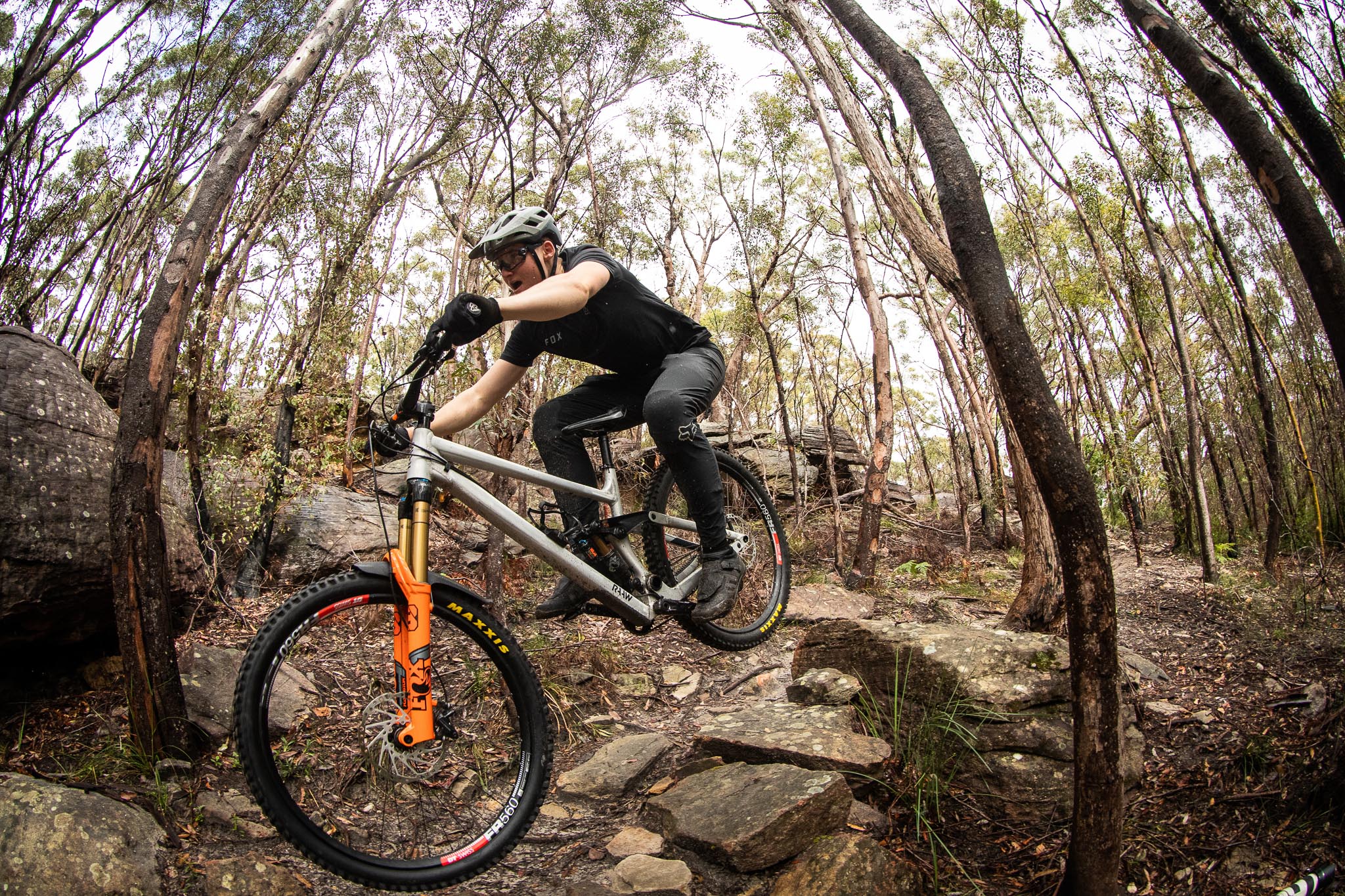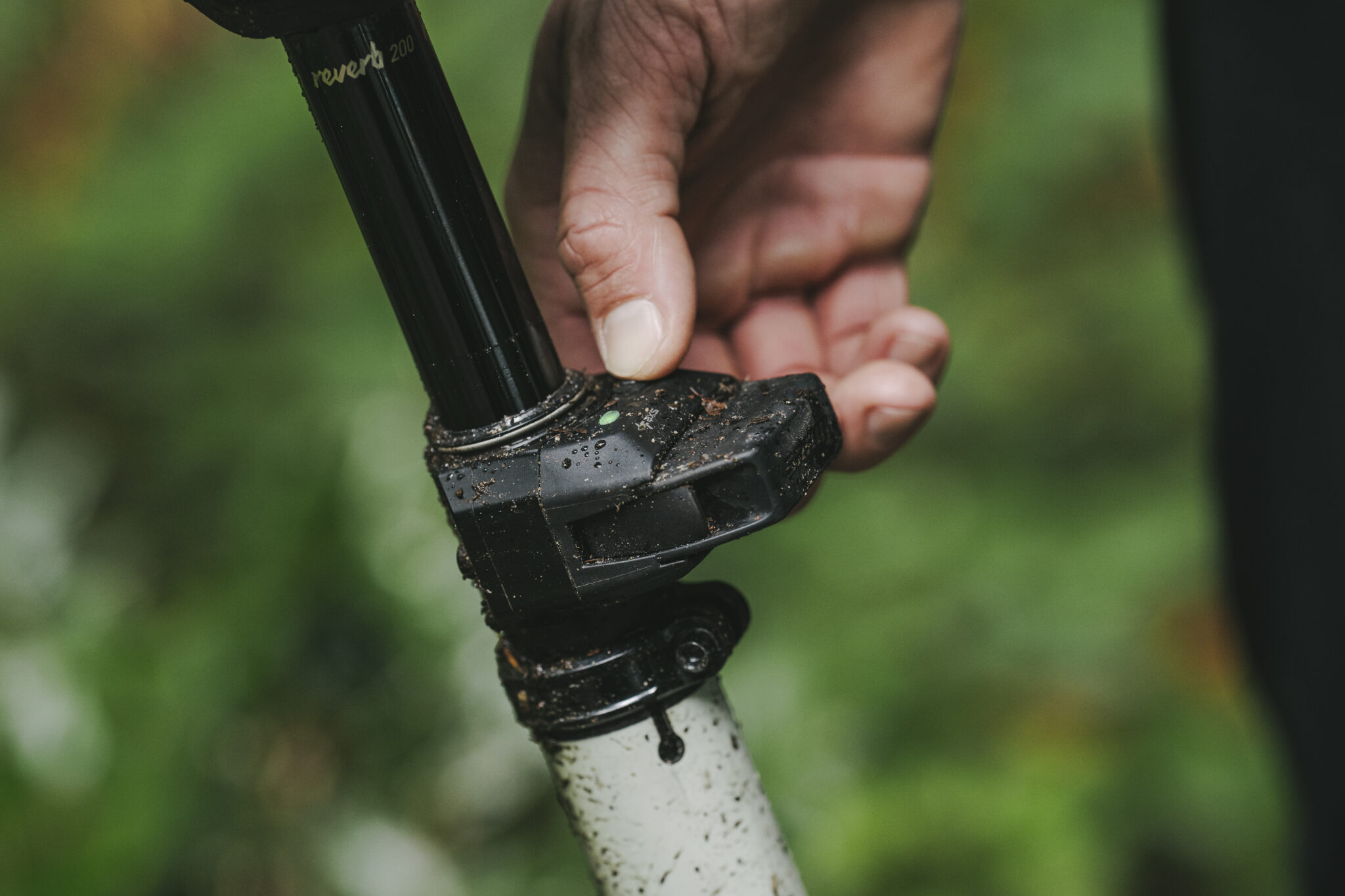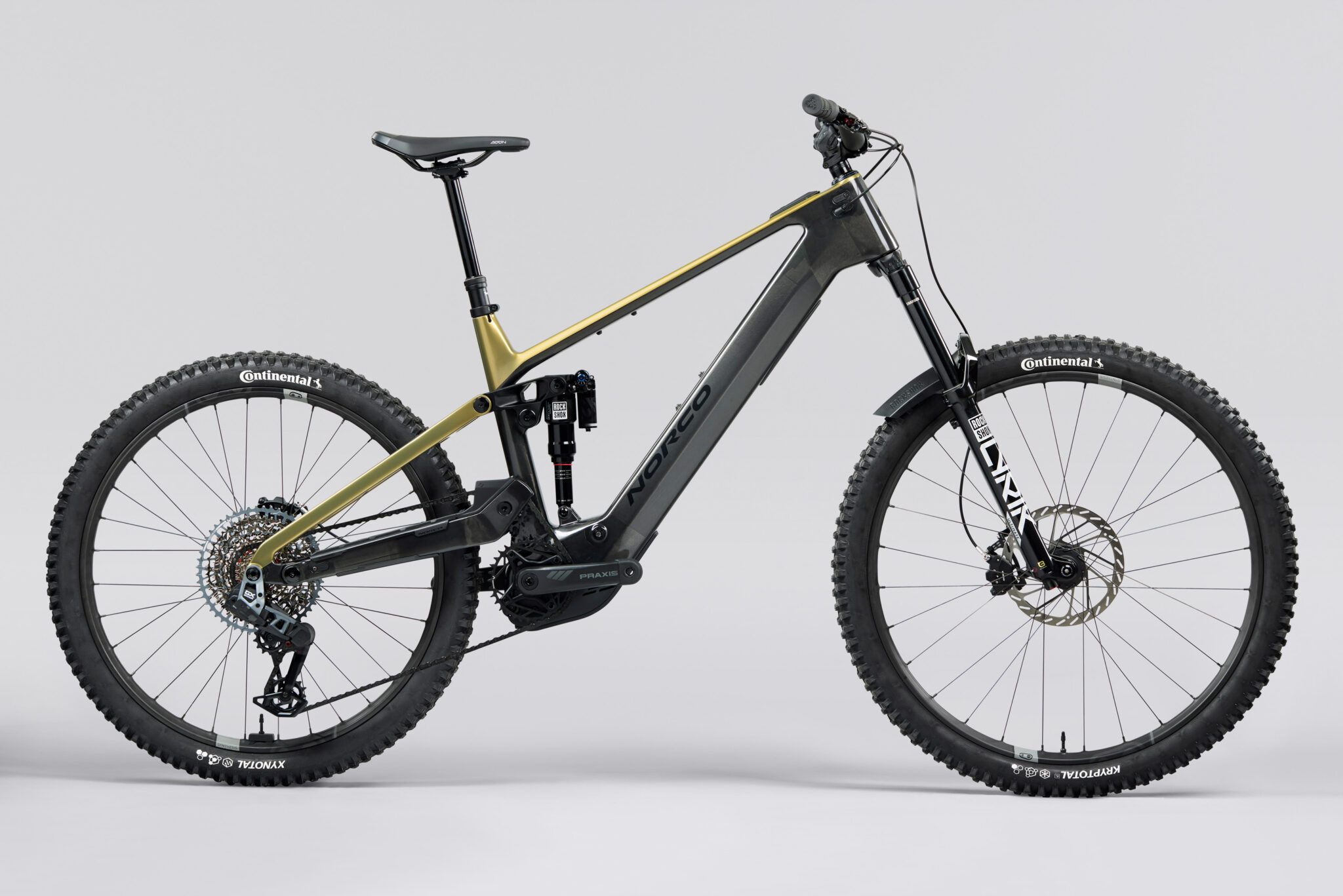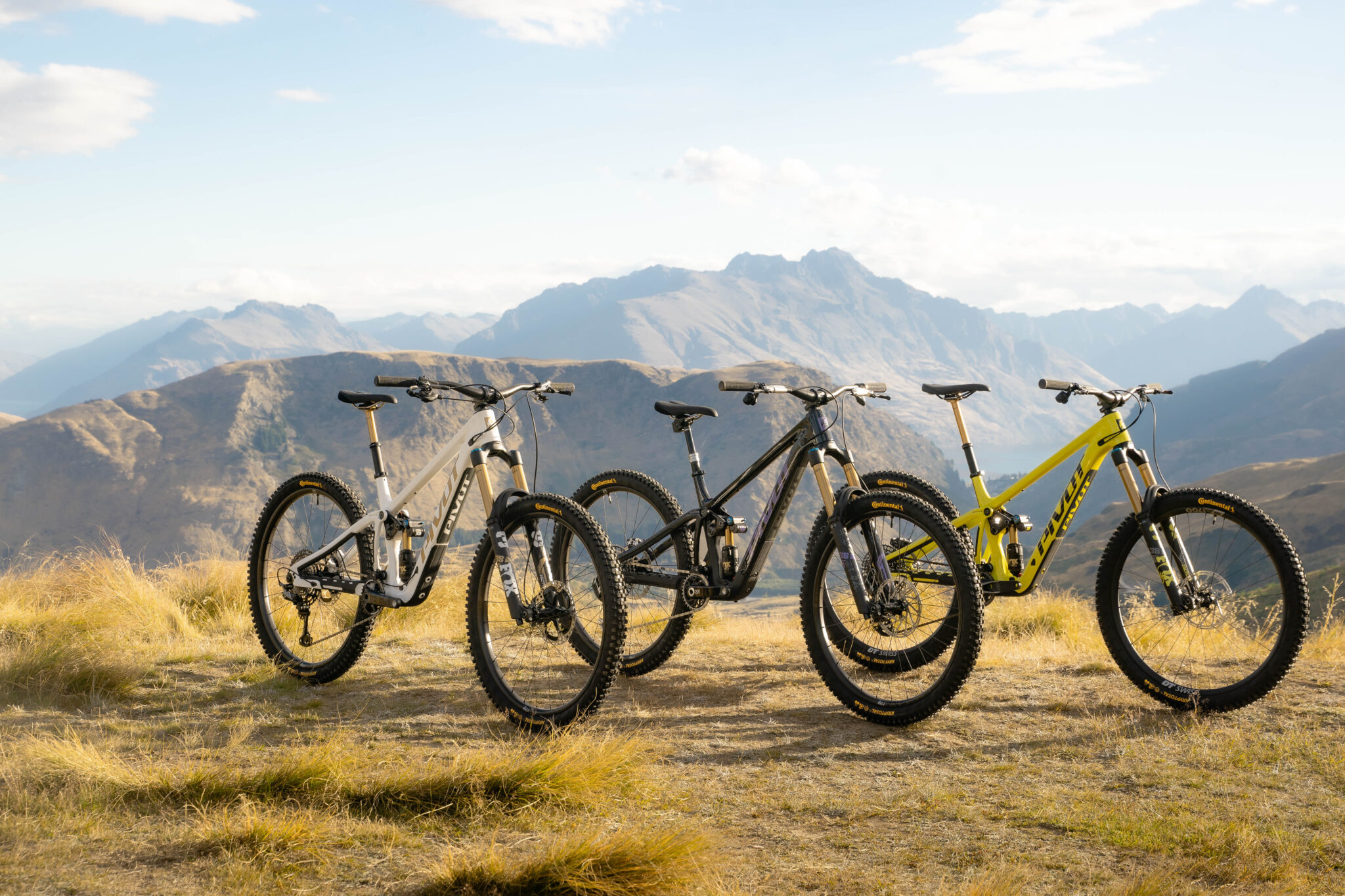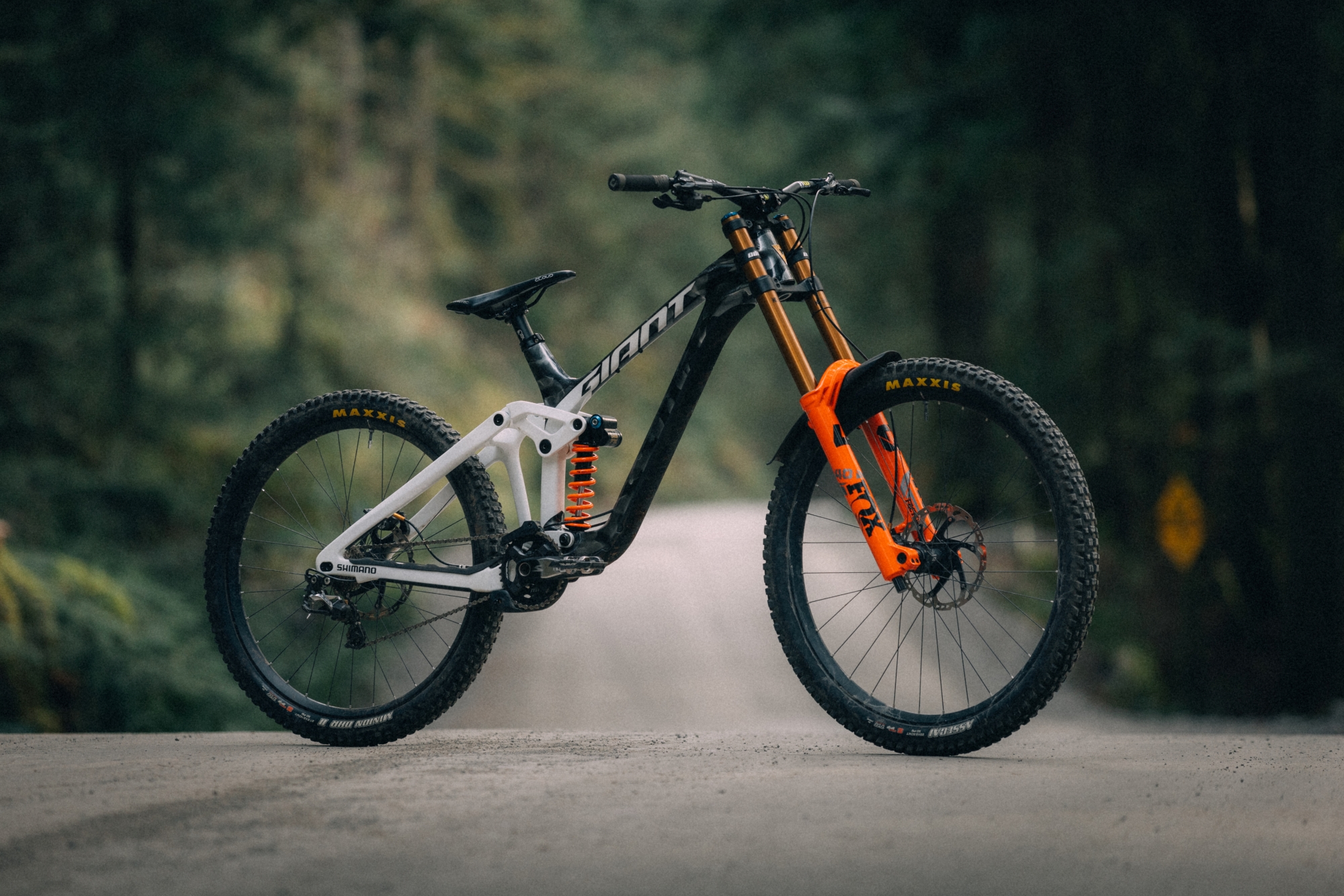TESTED: Fox Factory 38 Suspension Fork
In terms of damping performance, you can have your cake and eat it too with the 38's small bump sensitivity, mid stroke support, and bottom out control.
Words: Will Shaw
Photos: Tim Bardsley-Smith
The Fox 38 is Fox’s single crown Enduro offering in the 160mm-180mm travel bracket for both regular bikes and eBikes. Sticking to Fox’s easy to understand naming, the 38 range uses 38mm stanchions. The 38 is offered in Factory, Performance Elite, and Performance models, and the fork I had on test was the top-of-the-line Factory model.
The specs of the fork I rode were as follows – 29”, 170mm of travel, and 44mm of offset. The 38 is offered in 27.5” and 29” variants, with 37mm (27.5”), 44mm (27.5”/29”), and 51mm (29”) offset options. There’s two axle options. This first option that’s on my test fork is the tool free quick release option. The second is Fox’s Kabolt axle, which is tightened with a 6mm allen key. The lowers are offered in black and orange.
TESTED: Fox 36 Factory Fork
I tested the Fox 38 on my RAAW Madonna V2.2 long term test bike, which was the perfect match for this burly fork with its 160mm of rear travel and gravity focus. Alongside the fork I received the two bolt on mudguard options Fox offer for the 38 range, which are the standard mudguard and the XL mudguard. Both mudguards bolt onto the fork arch as well as the air bleeders on each of the lowers. Leave the single-use zip-ties alone!
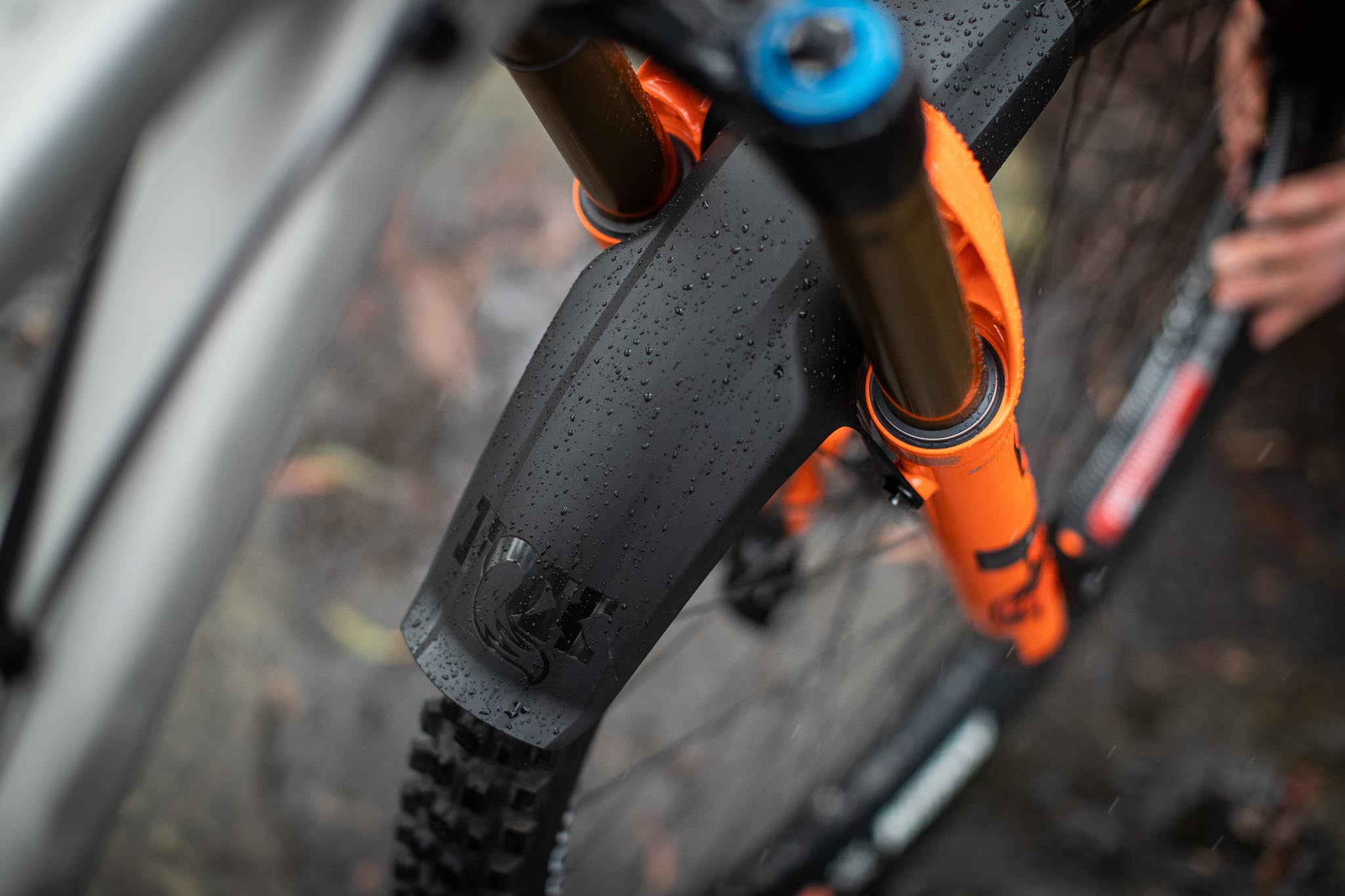
Being a long travel fork with thick stanchions, the Fox 38 is a weighty unit. My fork with an uncut steerer came in at over 2400 grams. Swapping the QR axle for a Kabolt axle will save you 77 grams if you’d prefer lower weight over tool free wheel removal.
Getting the Fox 38 setup
The initial setup of the Fox 38 is simple using the hard copy manual included in the box, and instructions are also easy to find on Fox’s website. The 38 Factory uses Fox’s GRIP2 damper, which offers external high and low speed compression and high and low speed rebound adjustment. There’s 8 clicks of the high-speed adjusters and 16 of the low-speed ones.
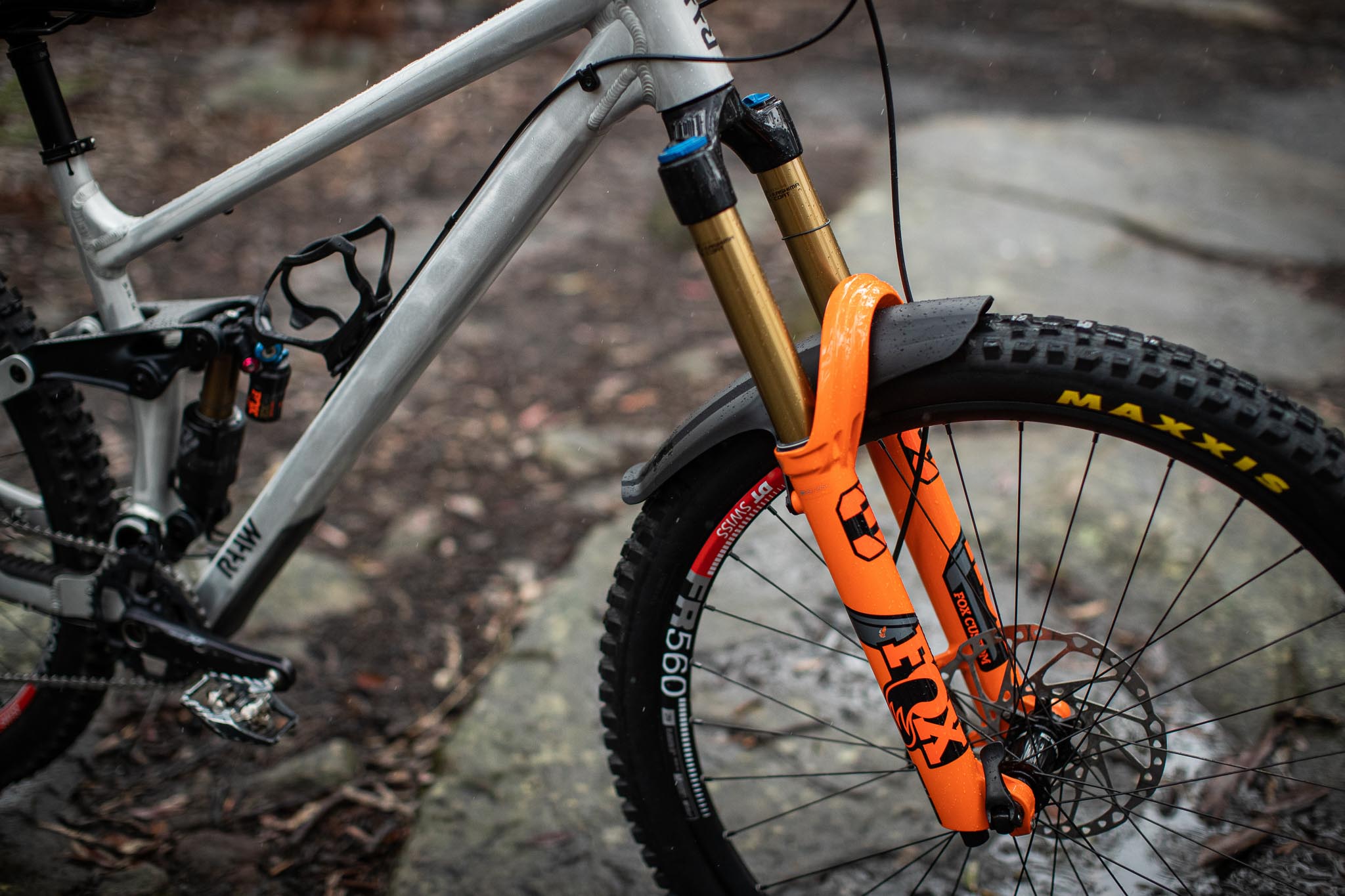
On the air spring side there’s the option to install volume reducers to increase the end stroke ramp up or remove them to make the fork more linear. For the 170mm fork I received 2 volume reducers are installed as standard, and there’s room for up to 5. Three additional reducers are provided with the fork, giving you the full range of adjustability.
For my initial fork setup, I followed Fox’s instructions. An initial bounce around my street felt a touch overdamped in both compression and rebound (too stiff and slow), but it’s always interesting to feel the base setup recommendation so I began there. I’m not running a steerer tool on the RAAW Madonna V2.2, but if that’s your preference it’s worth noting the 38 uses an elliptical steerer to assist with stiffness, so you’ll need a tool that’s compatible with the Fox 38 specifically.
On the trail
On the trail I did find Fox’s initial setup recommendations were a touch overdamped in both rebound and compression. I weigh around 85kg, and for that weight Fox’s initial recommendations were as follows:
Spring rate: 100psi
LSR: 11/16 (16 = fully closed/slowest)
HSR: 4/8 (8 = fully closed/slowest)
LSC: 6/16 (16 = fully closed/stiffest)
HSC: 3/8 (8 = fully closed/stiffest)
Volume Reducers: 2/5 (5 = maximum ramp up)
Once I’d done some bracketing with the fork and settled on settings that felt right to me, my experience with the 38 has been fantastic. Without this reading like a Fox advertisement, they’ve nailed almost everything you could want in a hard hitting, gravity focused fork. It’s very supple off the top, even if you’re running lots of compression. The mid stroke support is great, and with 2/5 volume spacers there was more than enough bottom out support for me as an 85kg rider, even on nose heavy drops to flat.
Whilst in the past the jump from a single crown fork to a downhill fork has been significant in terms of stiffness and damping performance, I think the 38 is more akin to a scaled down 40 than a beefed up 36. The composure on offer in chunky straights, high speed turns, and on the brakes in steep terrain is unbelievable compared to the single crown forks of only a few years ago.
In terms of bottom out adjustability, I experimented with 1 and 3 volume reducers and the difference is noticeable, so there’s a good range of adjustability on offer in this area. While the volume reducers offer a broad spectrum of performance from linear to Richie Rude level ramp up, the rebound and compression adjustment on offer is on the overdamped side in my opinion.
I don’t run my rebound ultra-fast, and I’m only a few clicks from running the LSR fully open. I also normally run my compression settings close to the manufacturer’s recommendations, but on the 38 I had the compression almost fully open. Whilst I found a great setup within the range offered by the clickers, I can see some situations where the range of adjustment might not be sufficient for some riders. See below for the settings I settled on after 2 months of riding.
Spring rate: 95psi
LSR: 3/16 (16 = fully closed/slowest)
HSR: 2/8 (8 = fully closed/slowest)
LSC: 2/16 (16 = fully closed/stiffest)
HSC: 2/8 (8 = fully closed/stiffest)
Volume Reducers: 2/5 (5 = maximum ramp up)
Another detail on the 38 range I’m a fan of is the two bolt on mudguard options. The standard and XL mudguards both take a couple of minutes longer to install than a zip tied mudguard, however they’re far stiffer, and your $2000 fork isn’t going to get rub marks all over it.
The standard mudguard provides similar coverage to a Marsh Guard or equivalent, although there’s no protection in front of the fork arch. The mudguard I preferred is the XL mudguard. The XL protrudes around 80mm in front of the fork arch, and around 240mm to the rear, so it’s somewhere between a regular mudguard and something designed for a UK winter. As it’s bolted onto the fork it doesn’t flap around like a larger zip tied equivalent, and for this reason the extra coverage isn’t buzzing your tyre like other mudguards can.
Something I found myself pondering while riding the 38 is where the incredible gravity performance of the 38 becomes a worthwhile trade off compared to the lighter 36, which is also a highly capable fork. For my personal situation the 38 isn’t necessary for the riding that’s close to home, but I’m happy to make the weight trade-off for the increased performance on offer for trips to places like Queenstown. Having such a capable fork has also motivated me to travel to trails slightly further from home with more challenging gravity terrain.
Our Take
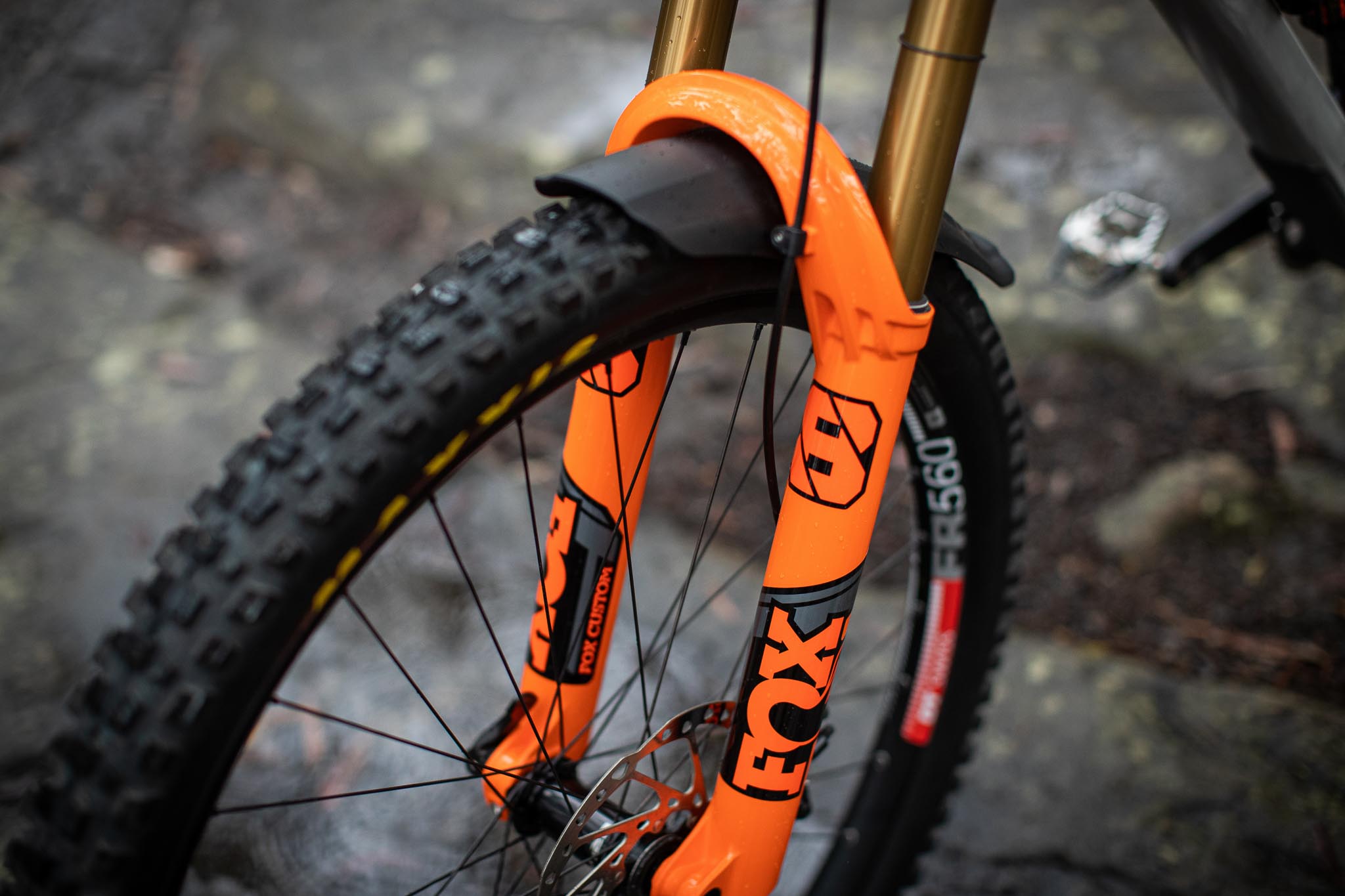
The Fox 38 Factory is a beast of a single crown fork. In terms of damping performance, you can have your cake and eat it too with small bump sensitivity, mid stroke support, and bottom out control. Nothing in life is without its compromises, and this incredible gravity performance does come with a weight penalty, so if you’re looking for a fork with 160mm of travel it’s worth considering if the 36 or 38 will suit your needs best.
RRP: $2049
From: ridefoxaustralia.com.au
Hits:
- Incredible damping performance
- Easy adjustability
- Integrated mudguards are a winner
Misses:
- Heavy
- Fork may be overdamped for some

